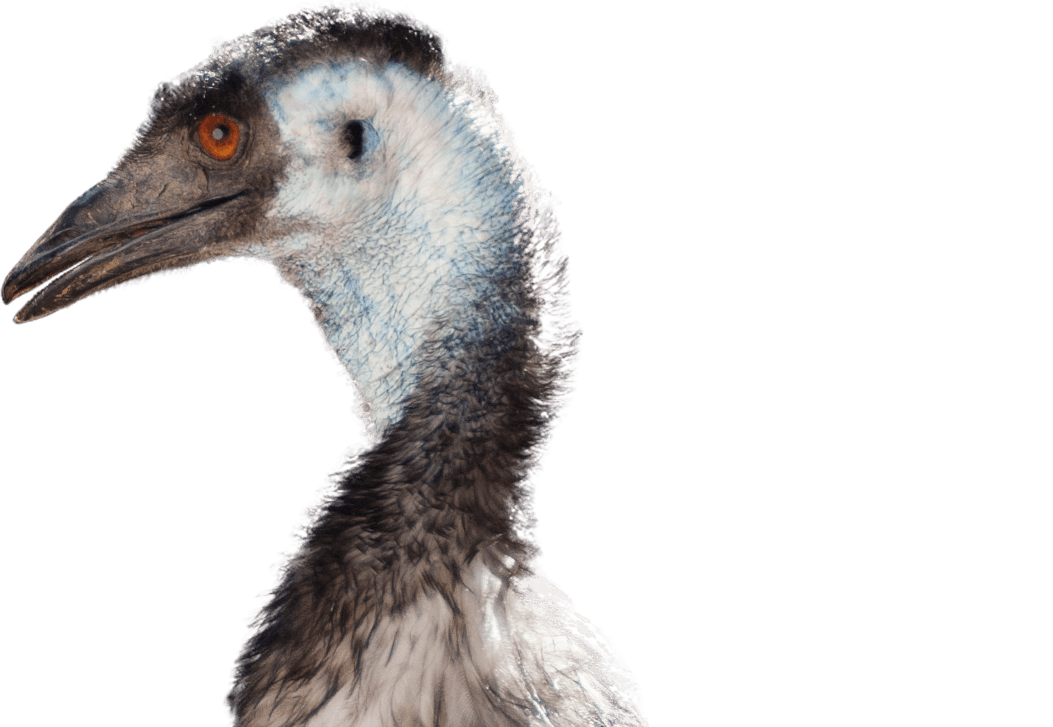Emu
Hello! I’m Moo the Emu
The Emu is the largest bird native to Australia and belongs to a group of flightless running birds known as Ratites which includes the Kiwi, Ostrich, Cassowary and Rhea. They live in most habitats across Australia, although they are most common in areas of sclerophyll forest and savannah woodland and least common in populated areas, dense forests and deserts. With their long and powerful legs, emus are able to travel long distances at a fast trot and, if necessary, can sprint at 50km/h for some distance at a time. Emus are the only birds with calf muscles. Their feet have three toes and fewer bones and muscles than those of flying birds. Their strong legs enable them to jump 2.1 metres in the air. With good eyesight and amazing agility, emus can escape almost any trouble!
Emus form breeding pairs in the summer and typically stay together through autumn, when the first clutch of eggs is laid. The male builds a rough nest of twigs, leaves, and grass on the ground where the female lays 5 to 15 eggs over the span of several days. Once the female is done, she wanders off, leaving the male to incubate the eggs for around 8 weeks. Male emus are such dedicated parents that they may lose one-third of their body weight by not feeding while brooding their clutch of eggs. After hatching, the male will continue to care for the chicks for up to 18 months.
The National Zoo and Aquarium is home to 1 Emu’s.

Emu facts
| CONSERVATION STATUS | Least Concern |
|---|---|
| DISTRIBUTION | Mainland Australia |
| WEIGHT | 30–60kg |
| HEIGHT | 1.5–1.9m |
| LIFE SPAN | 10–20 years in the wild, up to 35 years in captivity |
| GESTATION | 8 weeks |